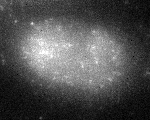File size: 6,275 Bytes
fc90964 6b7b7e9 fc90964 6b7b7e9 ac6ffeb 6b7b7e9 b96880f 4ef1525 b96880f 4e5cdd2 6b7b7e9 29d578b 6b7b7e9 b167c41 6b7b7e9 2a88ff3 5887c53 6b7b7e9 b167c41 6b7b7e9 5887c53 6b7b7e9 b96880f 6b7b7e9 b96880f 6b7b7e9 29d578b 6b7b7e9 29d578b 6b7b7e9 29d578b 6b7b7e9 29d578b 6b7b7e9 29d578b 909faa5 6b7b7e9 29d578b 6b7b7e9 29d578b 6b7b7e9 29d578b 6b7b7e9 |
1 2 3 4 5 6 7 8 9 10 11 12 13 14 15 16 17 18 19 20 21 22 23 24 25 26 27 28 29 30 31 32 33 34 35 36 37 38 39 40 41 42 43 44 45 46 47 48 49 50 51 52 53 54 55 56 57 58 59 60 61 62 63 64 65 66 67 68 69 70 71 72 73 74 75 76 77 78 79 80 81 82 83 84 85 86 87 88 89 90 91 92 93 94 95 96 97 98 99 100 101 102 103 104 105 106 107 108 109 110 111 112 113 114 115 116 117 118 119 120 121 122 123 124 125 126 127 128 129 130 131 132 133 134 135 136 137 138 139 140 141 142 143 144 145 146 147 148 149 150 151 152 153 154 155 156 157 158 159 160 161 162 163 164 165 166 167 168 |
---
tags:
- image-classification
- pytorch
- nasa
- biological
metrics:
- accuracy
model-index:
- name: NASA_GeneLab_MBT
results:
- task:
name: Image Classification
type: image-classification
metrics:
- name: Accuracy
type: accuracy
value: 0.8050341606140137
---
# NASA GeneLab VisionTransformer on BPS Microscopy Data
NASA GeneLab VisionTransformer on BPS Microscopy Data
## Authors:
[Frank Soboczenski](https://h21k.github.io/), University of York & King's College London, UK<br>
[Lauren Sanders](https://www.nasa.gov/people/lauren-sanders/), NASA Ames Research Center<br>
[Sylvain Costes](https://www.nasa.gov/people/sylvain-costes/), NASA Ames Resarch Center<br>
## General:
This Vision Transformer model has been fine-tuned on BPS Microscopy data. We are currently working on an extensive optimisation and evaluation framework.
The images used are available here:
[Biological and Physical Sciences (BPS) Microscopy Benchmark Training Dataset](https://registry.opendata.aws/bps_microscopy/) or as a Huggingface dataset here:
[kenobi/GeneLab_BPS_BenchmarkData](https://huggingface.co/datasets/kenobi/GeneLab_BPS_BenchmarkData).
This is a Vision Transformer model trained on Fluorescence microscopy images of individual nuclei from mouse fibroblast cells,
to classofy DNA damage caused by cell irradiation with Fe particles or X-rays.
We aim to highlight the ease of use of the HuggingFace platform, integration with popular deep learning frameworks such as PyTorch, TensorFlow, or JAX,
performance monitoring with Weights and Biases, and the ability to effortlessly utilize pre-trained large scale Transformer models for targeted fine-tuning purposes.
This is to our knowledge the first Vision Transformer model on NASA Genelab data and we are working on additional versions to address challenges in this domain.
We will include more technical details here soon.
## Example Images
>>> Use one of the images below for the inference API field on the upper right.
#### High_Energy_Ion_Fe_Nuclei


#### XRay_irradiated_Nuclei


## ViT base training data (currently being replaced)
The ViT model was pretrained on a dataset consisting of 14 million images and 21k classes ([ImageNet-21k](http://www.image-net.org/).
More information on the base model used can be found here: (https://huggingface.co/google/vit-base-patch16-224-in21k);
## How to use this Model
(quick snippets to work on Google Colab)
First a snippet to downnload test images from an online repository:
```python
import urllib.request
def download_image(url, filename):
try:
# Define custom headers
headers = {
'User-Agent': 'Mozilla/5.0 (Windows NT 10.0; Win64; x64) AppleWebKit/537.36 (KHTML, like Gecko) Chrome/58.0.3029.110 Safari/537.3'
}
# Create a request with custom headers
req = urllib.request.Request(url, headers=headers)
# Open the URL and read the content
with urllib.request.urlopen(req) as response:
img_data = response.read()
# Write the content to a file
with open(filename, 'wb') as handler:
handler.write(img_data)
print(f"Image '{filename}' downloaded successfully")
except Exception as e:
print(f"Error downloading the image '{filename}':", e)
# List of URLs and corresponding filenames
urls = [
('https://roosevelt.devron-systems.com/HF/P242_73665006707-A6_002_008_proj.tif', 'P242_73665006707-A6_002_008_proj.tif'),
('https://roosevelt.devron-systems.com/HF/P278_73668090728-A7_003_027_proj.tif', 'P278_73668090728-A7_003_027_proj.tif')
]
# Download each image
for url, filename in urls:
download_image(url, filename)
```
Then use the images for inference:
```python
#!pip install transformers --quiet # uncomment this pip install for local use if you do not have transformers installed
from transformers import AutoFeatureExtractor, AutoModelForImageClassification
from PIL import Image
# Load the image
#image = Image.open('P242_73665006707-A6_002_008_proj.tif') #First Image
image = Image.open('P278_73668090728-A7_003_027_proj.tif') #Second Image
# Convert grayscale image to RGB
image_rgb = image.convert("RGB")
# Load the pre-trained feature extractor and classification model
feature_extractor = AutoFeatureExtractor.from_pretrained("kenobi/NASA_GeneLab_MBT")
model = AutoModelForImageClassification.from_pretrained("kenobi/NASA_GeneLab_MBT")
# Extract features from the image
inputs = feature_extractor(images=image_rgb, return_tensors="pt")
# Perform classification
outputs = model(**inputs)
logits = outputs.logits
# Obtain the predicted class index and label
predicted_class_idx = logits.argmax(-1).item()
predicted_class_label = model.config.id2label[predicted_class_idx]
print("Predicted class:", predicted_class_label)
```
## BibTeX & References
A publication on this work is currently in preparation. In the meantime, please refer to this model by using the following citation:
For the base ViT model used please refer to:
```bibtex
@misc{wu2020visual,
title={Visual Transformers: Token-based Image Representation and Processing for Computer Vision},
author={Bichen Wu and Chenfeng Xu and Xiaoliang Dai and Alvin Wan and Peizhao Zhang and Zhicheng Yan and Masayoshi Tomizuka and Joseph Gonzalez and Kurt Keutzer and Peter Vajda},
year={2020},
eprint={2006.03677},
archivePrefix={arXiv},
primaryClass={cs.CV}
}
```
For referring to Imagenet:
```bibtex
@inproceedings{deng2009imagenet,
title={Imagenet: A large-scale hierarchical image database},
author={Deng, Jia and Dong, Wei and Socher, Richard and Li, Li-Jia and Li, Kai and Fei-Fei, Li},
booktitle={2009 IEEE conference on computer vision and pattern recognition},
pages={248--255},
year={2009},
organization={Ieee}
}
```
|